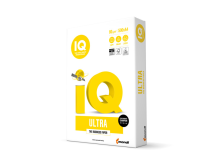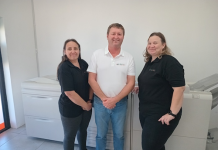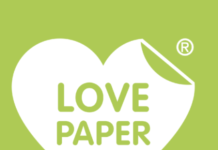In this article, Océ South Africa MD, Dave Clark, addresses why printed materials within the education sector offer great benefits.
Let’s face it, despite years of talk around the paperless environment, printed material is still very much in circulation and, within the higher education sector in particular, still has its benefits. The digital revolution has brought with it numerous opportunities that need to be incorporated into an environment where paper still offers great benefits in the learning process.
Over the past 30 years, more information has been produced than combined in all 5000 years before and this exponential growth is not expected to decrease in the coming years. This has only been possible because of developments within the information and communication technology (ICT) sector, which is not only ubiquitous but also affects all forms of human interaction. The internet has truly revolutionised the method by which knowledge is transferred, breaking down barriers and offering new choices, opportunities and challenges.
Experts polled about the future use of ICT in education are unanimous in their view that ICT will play an increasingly important role as the new media integrated into everyday life, predicting increasing co-operation and collaboration between education institutions at both a regional and global level. Advances in technology and increased user-friendliness of equipment will break down resistance to ICT used both within and outside the classroom. In fact, the traditional university is set to undergo an academic transformation, moving into a model of blended learning, where education will become more and more independent of time and place.
However, the employment of new technologies and innovation does not necessarily lead to educational quality improvement.
Although e-readers and other portable digital innovations have developed significantly, the convenience of paper formats still prevails for many people. A recent study by Océ-Technologies B.V.’s Jan Joris Raedts and Steve Jarvis, maintains that there are three areas in which printed materials still offer great benefits in the learning process.
Firstly, whatever the discussion on the delivery format, the fact is that information on paper sits still, making it easier to consider, compare and contrast. This means that something has been long considered the bug of print, may turn out to be its unique feature.
Secondly, another hurdle of network learning environments is the credibility of the information. For instance, an article published in a prominent journal, a book from a well-known publishing house or an article from a professor at a well-known university offers a high level of credibility. On the other hand, whilst an open participating learning network is democratic, making the voice of all messengers equal, and encourages a variety of thoughts and arguments, the credibility of the information is strongly dependent on the network members. The mixture of traditional print and more open structures into a blended learning environment can therefore offer the needed balance between content and credibility.
Finally, the cost associated with the ICT infrastructure needed to participate in network learning, and its necessary hardware, software, technical support, training and continual upgrades, can be enormous.
When looking at the use of traditional printed materials in educational institutions, the main objection has been the associated costs, as it is uneconomical to print a limited number of copies of traditional textbooks and other materials, such as course packs. With traditional printing methods, the argument for economies of scale have often outweighed the actual need for a publication. This issue is augmented by the fact that the production costs are paid in advance and are not recovered until all copies have been sold.
Printing on demand (PoD) may well be the perfect solution to this conundrum, as it is the best of both worlds and can offer a unique hybrid combination, allowing for very short print runs, even of textbooks, at a realistic price. So, instead of storing books and course packs as physical items in storerooms, they can be printed the moment there is a need for them, eliminating the two biggest expenses involved in book publishing: warehousing and the financial risks of printing a large number of books.
In his 1995 speech, Long Walk to Freedom, Nelson Mandela mentioned that Education is the most powerful weapon you can use to change the world. There is still very much a place for printing to help education in this noble task.





















